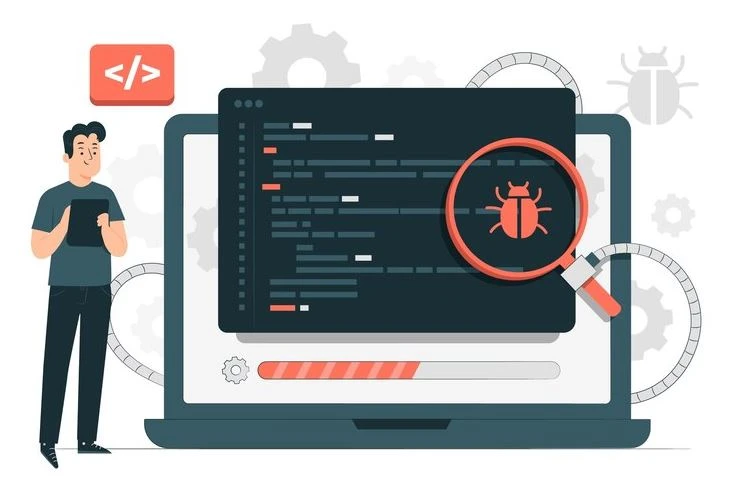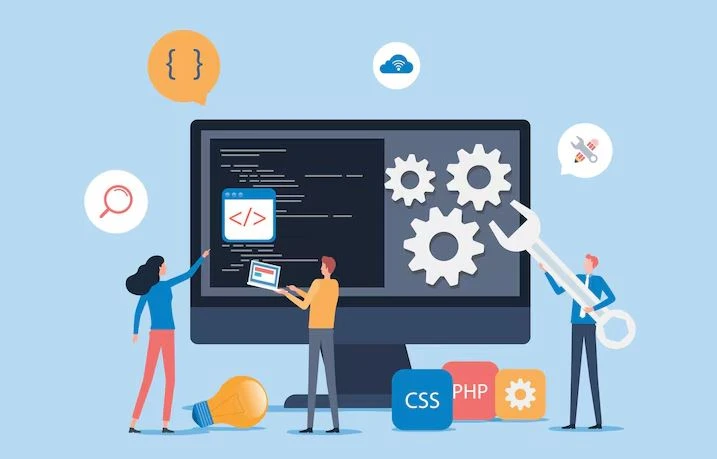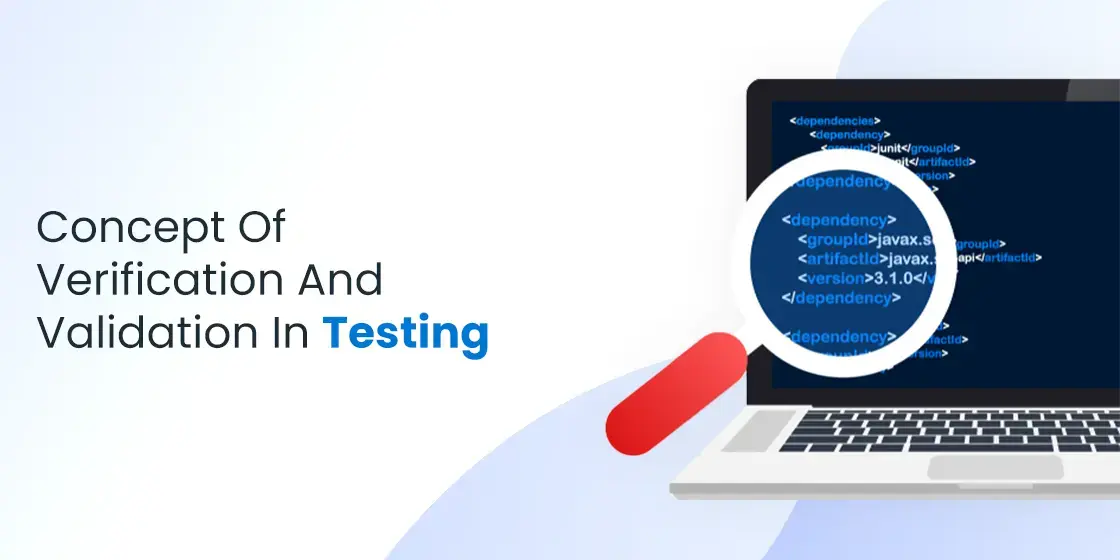Table of Content
Understand the Differences Between Verification and Validation in Software Testing
Software testing is an important job that precisely requires good technical skills. It generally involves two sub processes to evaluate everything inside a software application. These two sub processes are called verification and validation. They help developers to evaluate the efficiency of every component, letting them know that everything is working fine as per the defined objectives. Those who do not pay attention to these processes, always struggle to put out a perfect application. These two processes are considered necessary because nothing can be deployed or released without passing their checkmarks.
By taking professional software development services, you get the surety to build a software with complete performance validation. Whether you are building an ecommerce app or a banking application, reputed companies always provide top-notch development solutions. They understand the importance of seamless product performance, something that can only be done by having zero errors in the application. With this approach, they perform specialized verification and validation in software testing, so that the final product can be rolled out perfectly in the market.
If you also want to build software testing expertise similar to that of professional IT agencies, read this blog in detail. It will let you know how to perform verification and validation in software testing as per the best market standards. Let’s first start from the basics understanding what is software testing and why it is termed important to solidify the quality of any application.
What is Software Testing?

Software testing is the process of evaluating and verifying that a software application or system meets specified requirements and works as intended. This process involves executing the software to identify any gaps, errors, or missing requirements in contrast to the actual requirements. The primary goal of software testing is to ensure the reliability, security, and high performance of the software product before it is released to end-users. This involves various levels and types of testing, such as unit testing, integration testing, system testing, and more others.
Effective software testing employs both manual and automated techniques to rigorously scrutinize the software. Manual testing involves human testers who execute test cases without the use of software testing tools, allowing them to identify issues that automated tests might miss due to their ability to observe unexpected behaviors or use the application in non-standard ways. Automated testing, on the other hand, uses software tools to run predefined test cases automatically, making it possible to conduct repetitive and extensive testing efficiently.
Software testing is crucial not only for identifying defects but also for ensuring the overall quality of the software product. It helps in validating the software’s performance under various conditions, its compatibility with different devices or systems, and its usability from an end-user perspective. Furthermore, it supports continuous improvement by providing regular feedback to developers, allowing for iterative enhancements. In the broader scope of software development, testing contributes to risk management and cost reduction by identifying issues early in the development process.
Division of Software Testing

As defined above, software testing is divided into two sub processes i.e. verification and validation. Both of these processes are executed separately, so that the assessment of components, functions and modules can be done accordingly. Being a beginner, you would not have much knowledge about these testing procedures. Let’s take a detailed look at them below.
What is Verification Testing?
Verification testing is a type of software testing focused on ensuring that the product is being built correctly according to specified functional requirements and design specifications. It involves checking and reviewing various artifacts, such as design documents, requirement specifications, code, and test plans, to ensure that each stage of the development process adheres to the predetermined guidelines and standards. This form of testing does not involve executing the code but rather examines the process and intermediate products to identify errors early in the development lifecycle.
The primary goal of verification testing is to confirm that the software development process is on the right track. It includes activities such as inspections, walkthroughs, reviews, and audits. These activities are systematic evaluations performed by team members or stakeholders to detect discrepancies, ambiguities, or inconsistencies in the documentation or implementation. By ensuring that each step of the development process is conducted correctly, verification testing helps prevent defects from propagating to later stages.
Verification testing is essential for maintaining quality control throughout the software development lifecycle. It helps ensure that the software product meets its specified requirements and design criteria before moving on to validation testing. By identifying and addressing issues early through verification, teams can reduce the risk of significant problems during later stages of development and testing. This approach ultimately contributes to the production of a more reliable and high-quality software product, saving time and resources while improving customer satisfaction.
Fuel innovation by leveraging bespoke software solutions. Get in touch with our team of experts to build cutting-edge software products.
Get a QuoteWhat is Validation Testing?
Validation testing is a type of software testing that focuses on ensuring that the final product meets the needs and expectations of its users. It involves executing the software with the intent of finding any discrepancies between the actual output and the expected results as defined by the user requirements. The primary objective of validation testing is to confirm that the software performs its intended functions in a real-world environment and satisfies the business requirements and user needs it was designed to address.
This type of QA testing encompasses various forms of testing such as functional testing, system testing, and acceptance testing. Functional testing verifies that each function of the software operates in conformance with the requirement specification. System testing examines the complete integrated system to evaluate the system’s compliance with its specified requirements. Acceptance testing, often performed by the end-users or clients, is the final phase of validation testing where the software is tested in the ‘live’ environment to ensure it is ready for deployment.
Validation testing is crucial for the success of a software product because it ensures that the product is not only built correctly but also that it is the right product for the users. By simulating actual usage scenarios and environments, validation testing provides insights into the software’s usability, performance, and overall user experience. It ensures that the software meets all business and user requirements, which is key to user satisfaction and business success. This testing phase helps in mitigating risks related to software deployment, such as identifying any critical issues timely.
Advantages of Verification Testing

Verification testing provides various types of advantages to the developers. It gives them a timely node about the impending errors, so that they could be resolved before the deployment. Besides that, there are other benefits as well that should be known to every developer. Let’s take a quick look at them below.
- Verification testing allows for the identification and rectification of errors and defects at the early stages of the software development lifecycle.
- By catching defects early, verification testing significantly reduces the cost associated with fixing bugs during later stages of development or after the product has been released.
- Verification testing ensures that each phase of the development process adheres to specified requirements and standards, resulting in higher quality intermediate and final products.
- Through rigorous verification, teams can ensure that the development process aligns closely with the initial requirements and design specifications.
- Verification testing often involves detailed reviews and inspections, which contribute to improved documentation quality.
Advantages of Validation Testing

Validation testing helps developers to evaluate the functionality of the application. It gives the team a go-ahead for the deployment, so that they can make specific decisions timely. Here are some of the key advantages developers get by performing validation testing at the end of the process.
- Validation testing confirms that the final product meets the specified requirements and design specifications.
- By ensuring the product meets user expectations and requirements, validation testing enhances customer satisfaction and builds trust in the product.
- It helps in identifying defects, gaps, or discrepancies between the product’s intended and actual performance.
- Validation testing can reveal gaps in requirements that might have been missed during the initial phases, ensuring a more comprehensive and robust product.
- Web application testing helps mitigate the risks associated with product failures, security vulnerabilities, and performance issues.
Difference Between Verification and Validation in Software Testing

The differentiation between validation and verification primarily hinges on the function and importance of specifications within the development process. Validation is focused on ensuring that the specifications accurately reflect the customer’s needs and expectations. This step involves confirming that the intended requirements of the customer are correctly captured and understood before moving forward with development. It is an essential phase that aligns the project goals with what the customer actually wants, thereby preventing costly revisions later in the process.
On the other hand, verification is concerned with the assessment of whether the software product complies with these established specifications. This process involves a series of rigorous activities designed to ascertain that every aspect of the software meets the predefined criteria set out in the specifications. Verification is methodical and typically involves objective measures such as reviews, inspections, testing and more others. Unlike validation, which can involve subjective interpretation of customer needs, verification is strictly about adherence to documented requirements.
Overall, verification encompasses all tasks necessary to produce high-quality software. This includes systematic activities such as code reviews, unit testing, integration testing, and more others. The objective nature of verification means that it relies on quantifiable measures and established benchmarks to evaluate the software. This distinction underscores the importance of both processes: validation ensures the right product is being built for the customer, while verification ensures the product is built right according to the specifications.
When to Use Verification Testing?

Contrary to the concept of performing testing at the end, verification testing should be employed throughout the software development lifecycle. This type of software testing is crucial during the initial stages, such as design and development, where detailed reviews and inspections are conducted to verify that each component is being constructed according to the predetermined specifications. By incorporating verification testing early and often, developers can identify and rectify defects at each stage before they propagate further into the development process.
Additionally, verification testing is indispensable during the implementation phase, where specific activities like unit testing, integration testing, and system testing are carried out. These activities are designed to systematically evaluate whether the individual components and the integrated system meet all specified requirements. By rigorously verifying each aspect of the application against its specifications, developers can confidently progress towards validation testing, knowing that the foundation of the software is robust and accurate.
When to Use Validation Testing?

Validation testing should be used during the later stages of the software development lifecycle, particularly after verification testing has confirmed that the application meets its specifications. The primary purpose of validation testing is to ensure that the final product aligns with the user’s needs and requirements, effectively addressing the intended use of the application. This phase typically involves activities such as system testing, user acceptance testing (UAT), and beta testing, where the software is evaluated in real-world scenarios by end-users or client representatives.
Furthermore, validation testing is crucial before the software is deployed to production. This final check helps to identify any discrepancies between the developed software and the customer’s requirements that may not have been apparent during earlier testing stages. It ensures that all functionalities are working correctly and that the application delivers a satisfactory user experience. By thoroughly validating the software, organizations can mitigate the risk of post-deployment issues properly.
Frequently Asked Questions
| What is software testing? Software testing is the process of evaluating a software application to identify and rectify defects. It involves executing the software in various scenarios to validate its correctness, performance, and user experience. |
| What is verification testing? Verification testing is the process of ensuring that a software product meets its specified requirements through systematic reviews, inspections, and other processes. It confirms that the software is built correctly according to design documents and technical specifications. |
| What is validation testing? Validation testing is the process of evaluating a software application to ensure it meets the customer’s requirements and expectations. It verifies that the right product is being built according to user needs and business goals. |
Final Words
That brings us to the end of this blog in which we have discussed how to perform verification and validation in software testing. Both of these processes are considered important for software testing, hence developers should have a sound knowledge about them. They should also know the differences between these two, as how they are performed and what type of strategies are employed in them. This blog has covered plenty of things in detail, so that you can start the testing process without running into any difficulty or confusion.
Empower your digital initiatives with BariTechSol, a premier custom software development company. Our skilled team tailors cutting-edge solutions to your unique needs. Elevate your tech experience and stay ahead in the digital realm. Partner with BaritechSol and code the success of your next big idea.


